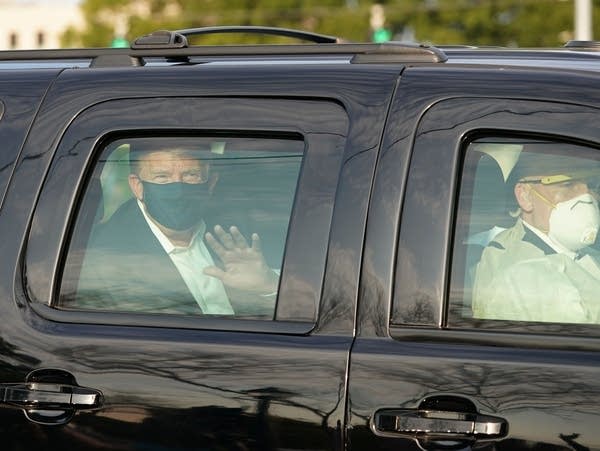Trump declares 'I get it' about coronavirus, then briefly leaves hospital

President Donald Trump waves from the back of an SUV in a motorcade outside of Walter Reed Medical Center in Bethesda, Md., on Sunday.
Alex Edelman | AFP via Getty Images
Go Deeper.
Create an account or log in to save stories.
Like this?
Thanks for liking this story! We have added it to a list of your favorite stories.


